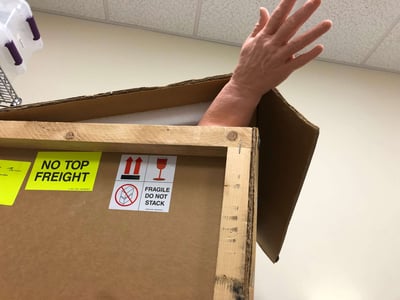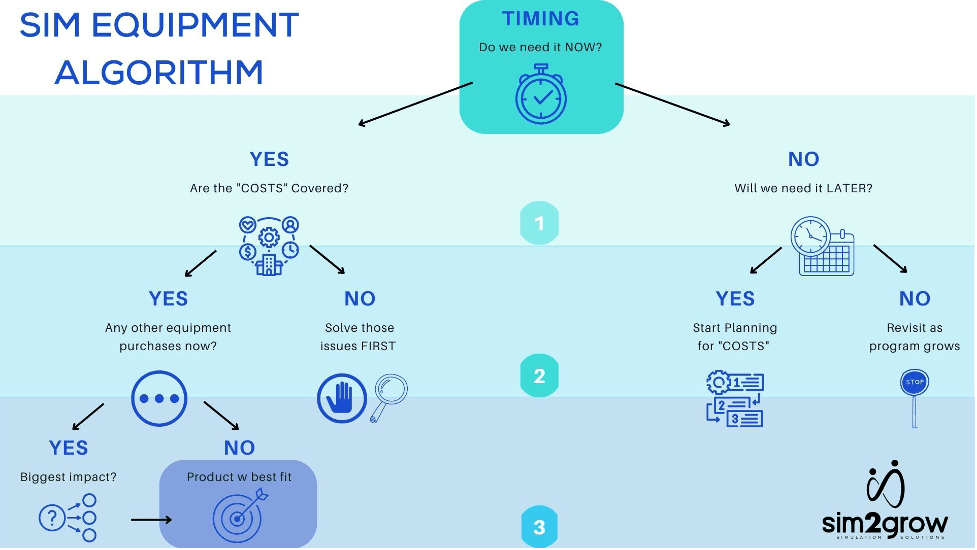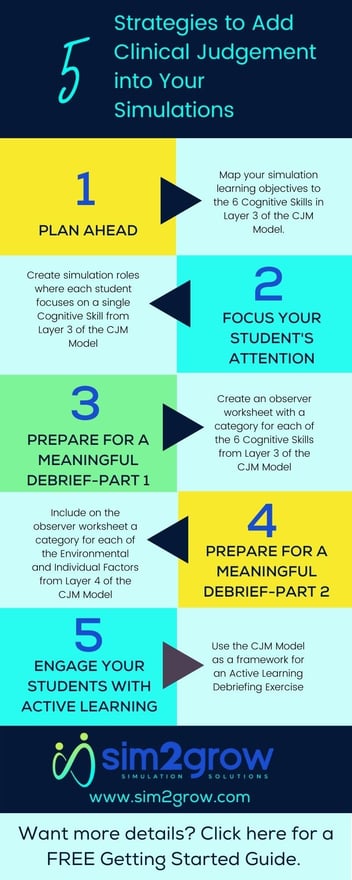Learn to Purchase Medication Administration Simulation Equipment Like a Pro: End Equipment Abandonment!

There are endless mannikins and pieces of simulation equipment banished to the corner of sim center storerooms across the world. The person who made the purchase may have moved on, or it was an impulse purchase during a funding windfall. Maybe there were equipment funds in the budget that needed to be spent, and since you couldn’t pay for more help, you made a purchase with good intention to teach yourself how to use it during “downtime” that never seems to come.
Sticker shock is common when it comes to the price of nursing simulation equipment. Oftentimes, you are considering items that are more expensive than the car you drive to work. When you’re contemplating a list of new items, the budget can rapidly exceed the price of a small mansion!!! It’s normal to feel there’s a lot riding on your decisions…because there is.
Many simulation coordinators feel unsettled when it comes to making equipment purchases. It’s challenging. We can all recall a purchase that might not have been the best fit for the situation. It’s easy to lose your way while navigating the purchasing process.
Budget decisions always seem to be needed while juggling several other priorities competing for your attention. Simulations still need to be run, repairs and maintenance work must be done, and schedules have to be managed. And an exhaustive amount of paperwork is usually required for each equipment purchase request. Additionally, multiple quotes are frequently required if the purchase is deemed a capital expense. Scheduling time for demos can be a hassle.
Consider this scenario:
SURPRISE! You just were told there’s a budget surplus! ...and, by the way, you need to have your paperwork in “by tomorrow morning” or you’ll lose out.
If you’re new to the role, “You don’t know what you don’t know” is a painfully real situation and the acquisitions process can be like navigating a maze blindfolded. Rest assured: you can be a good steward of the money being spent to educate healthcare practitioners in delivering safe patient care! Let’s take off the blindfold and look at a map to navigate the maze.
If you want all your equipment purchases working for you, helping learners confidently provide safe care, rather than being exiled to a dark closet, take these three steps:
- Conduct a Needs Assessment
- Do a Cost Evaluation
- Apply Simulation Equipment Algorithm
Here's the sim2grow equipment decision worksheet to follow along with.
Conduct a Needs Assessment
Taking time to do a thorough evaluation and realistically comparing it to your needs is the easiest way to help you purchase with confidence! Ask yourself: Why do I want this piece of simulation equipment?
- “Because it’s sooo cool” …isn’t a good enough reason
- “It looks real” isn’t necessarily sufficient
- “The school down the road has one”…might lead to buyer’s remorse
- “So and So said we should get one”…needs to be further explored!
|
LEARNING OBJECTIVES Which learning objectives will be met by purchasing this piece of simulation equipment and can multiple objectives be achieved with it? |
|
LEARNER GROUPS How many different users can benefit from the desired simulation equipment? |
|
PROJECTED VOLUME OF USE
|
|
INTERNAL DEAL BREAKERS
|
|
ALTERNATIVES
|
Do a Cost Evaluation
There’s more to the “cost” of a purchase than how much money leaves your budget. As buyers, we are tempted to look only at finances and often don’t consider the “hidden” costs…. What is the cost in terms of:
|
TIME
|
|
HUMAN RESOURCES How many extra people will be needed (standardized patients, additional faculty for task trainer stations) if your purchase is not a learner-directed piece of equipment. |
|
SPACE
|
|
SUPPLIES
|
|
FINANCIAL COMMITMENTS Keep track of these for each of the items you are considering
|
Apply Sim Equipment Algorithm
First, make a Needs Assessment chart for each piece of equipment for your practice lab and simulation program. Next, make a Cost Evaluation chart. Finally, update these documents annually so you have this information at the ready for the next financial windfall!
The sim2grow Simulation Equipment Algorithm maps out the decision-making process for new purchases.
Some Final Thoughts
- Do your homework ahead of time…don’t wait until budget requests are due.
- Always have a wish list prepared for unexpected funding…including quotes and required documents.
- Make sure you are aware of the total cost of a piece of equipment…. don’t forget the “hidden costs”.
- Conduct a market analysis of similar products to find out what’s best for you and your program based on your Needs Assessment.
- Remember that sim technology has a shelf life. The clock will continue to tick while equipment spends time in storage.
- Know your why…don’t be tempted to buy just because it looks cool.
Download the sim2grow Sim Equipment Algorithm worksheet.
Start your research on Medication Administration Training Solutions! Sign up for a free discovery call with the sim2grow team and see how to add med admin to your program without the hassle that comes with some sim equipment. Watch the system in use.




